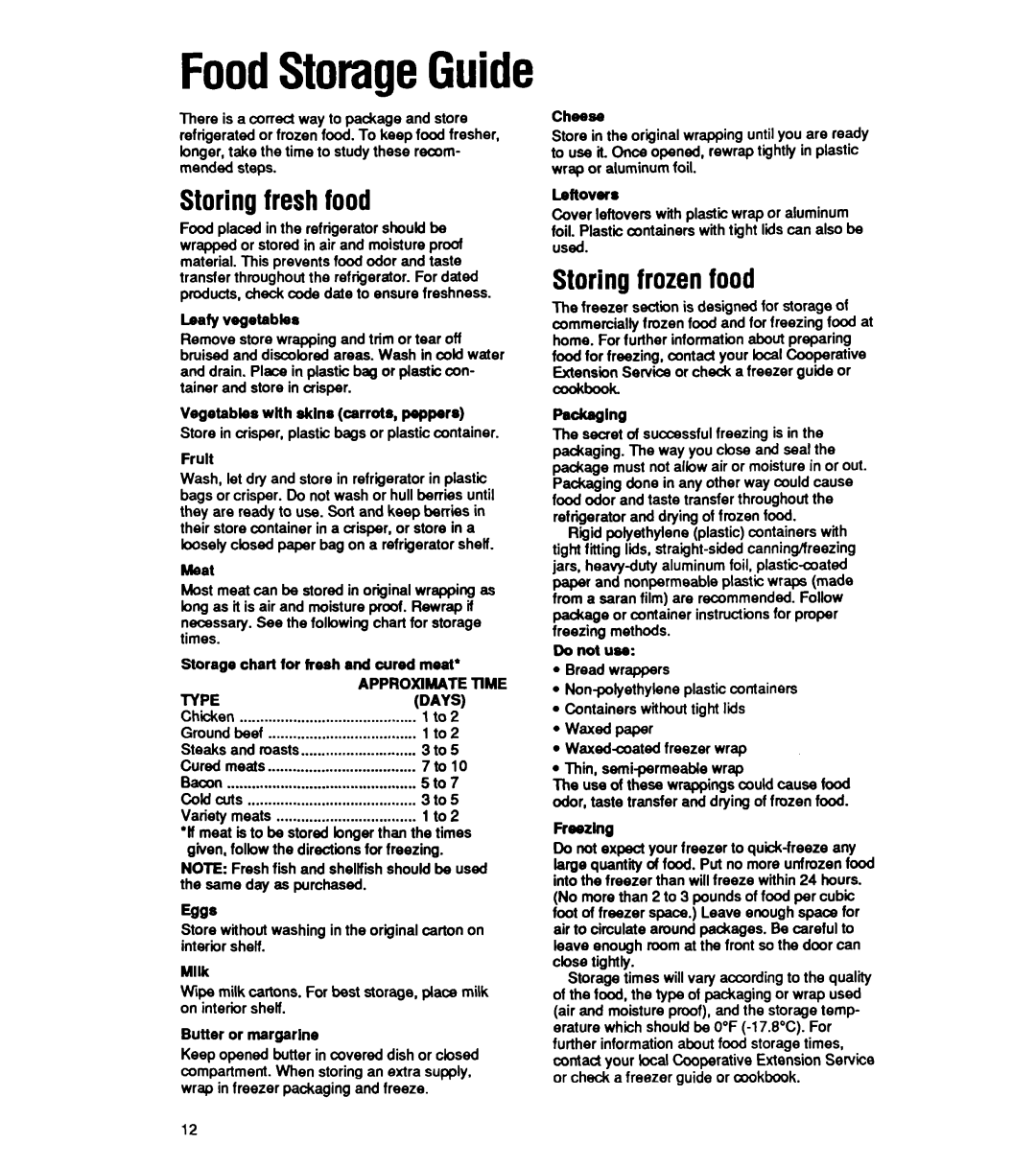
FoodStorageGuide
There is a coned way to package and store refrigerated or frozen food. To keep food fresher, longer, take the time to study these recom- mended steps.
Storingfresh food
Food placed in the refrigerator should be wrapped or stored in air and moisture proaf material. This prevents food odor and taste transfer throughout the refrigerator. For dated products, check code date to ensure freshness.
Leafy vegetables
Remove store wrapping and trim or tear off bruised and discobred areas. Wash in cold water and drain. Place in plastic bag or plastic con- tainer and store in crisper.
Vegetables wtth skins (carrots, peppers)
Cheese
Store in the original wrapping until you are ready to use it. Gnce opened, rewrap tightly in plastic wrap or aluminum foil.
Leftovers
Cover leftovers with plastic wrap or aluminum foil. Plastic containers with tight lids can also he used.
Storing frozenfood
The freezer section is designed for storage of commercially frozen food and for freezing food at home. For further information ahout preparing food for freezing, contact your bcal Cooperative Extension Service or check a freezer guide or wokbwk.
Store in crisper, plastic hags or plastic container.
Frult
Wash, let dry and store in refrigerator in plastic bags or crisper. Do not wash or hull berries until they are ready to use. Sort and keep berries in their store container in a crisper, or store in a basely cbsed paper hag on a refrigerator shelf.
Meat
Most meat can he stored in original wrapping as bng as it is air and moisture proof. Rewrap it necessary. See the following chart for storage times.
Storage chart for fresh and cured meat*
APPROXMATE llME
TYPE(DAYS) Chicken ........................................... 1 to 2
Ground beef .................................... 1 to 2 Steaks and masts............................ 3 to 5
Cured meats .................................... 7 to 10 Bacon .............................................. 5 to 7 cold cuts ......................................... 3 to 5 Variety meats .................................. 1 to 2 l tf meat is to be stored bnger than the times given, folbw the directions for freezing.
NOTE: Fresh fish and sheltfish should he used the same day as purchased.
Eggs
Store without washing in the original carton on interior shelf.
Milk
Wipe milk cartons. For best storage, place milk on interior shelf.
Butter or margarlne
Keep opened butter in covered dish or closed compartment. When storing an extra supply, wrap in freezer packaging and freeze.
The secret of successful freezing is in the packaging. The way you close and seal the package must not allow air or moisture in or out. Packaging done in any other way could cause food odor and taste transfer throughout the refrigerator and drying of frozen food.
Rigid polyethylene (plastic) containers with tight fitting lids,
Do not use:
lBread wrappers
l
l Waxed paper
l Waxedcoated freezer wrap
lThin,
The use of these wrappings could cause food odor, taste transfer and drying of frozen food.
Freezing
Do not expect your freezer to
Storage times will vary according to the quality of the food, the type of packaging or wrap used (air and moisture proof), and the storage temp- erature which should he 0°F
12
